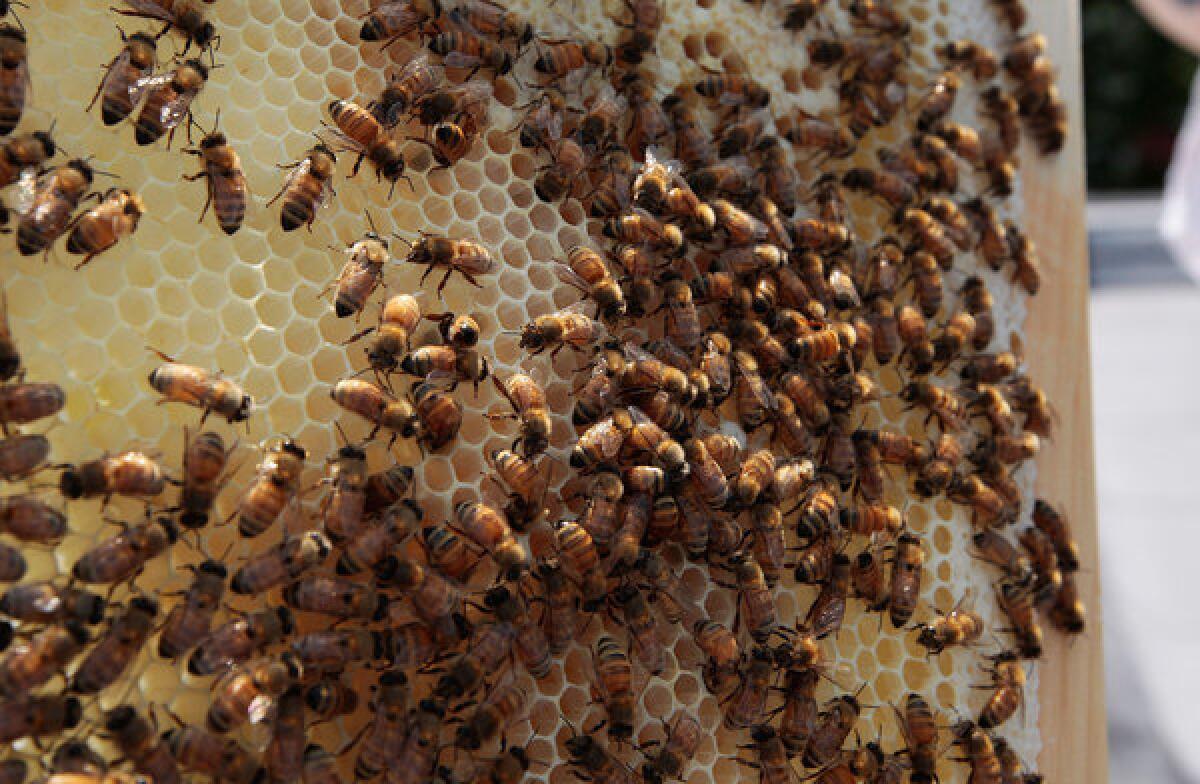Honeybees can bite as well as sting; venom could be anesthetic

- Share via
Honeybees have defensive weapons at both ends of their bodies, Greek and French researchers have found: They can not only sting their enemies, as has long been known, but they can also bite them, injecting a venom that paralyzes invaders. The venom might be useful as an anesthetic in humans and other animals, the researchers speculate, and a British company has already patented the application and conducted preliminary tests suggesting that the venom works much like the well-known lidocaine.
The discovery was inadvertent. A team led by biologist Alexandros Papachristoforou of the Aristotle University of Thessaloniki in Greece was studying ways to control wax moths. The moths are a serious problem for beekeepers, invading hives, consuming wax and pollen and often destroying the honeycomb. Using natural products on the moths, the researchers tried 2-heptanone, which is produced naturally by the bees. At first, the team thought exposure to the chemical killed the wax moths. “However, on closer inspection, we realized that the wax moths were merely anesthetized for a period of one to nine minutes,” Papachristoforou said. “This was quite unexpected, so our scientific team set up a series of rigorous experiments to find out what was really happening and came up with our remarkable discovery.”
Their findings were published in the online journal Plos One.
The research showed that the bees bite intruders such as wax moths and varroa mites that are too small to sting. The 2-heptanone is stored in a mandibular gland in their mouth and injected into the victim through grooves in the bee’s teeth. Once the invader is anesthetized, it can be ejected from the hive.
Commonly known as 2-H, 2-Heptanone has previously been found in bread and wine and is generally considered harmless. Researchers had previously believed that it was an alarm signal emitted by the bees, but the new research suggests it has a more crucial function.
Independent tests by Vita (Europe) Ltd. of Britain show that the 2-H can act as an anesthetic on human and animal skin and may have fewer potential side effects than lidocaine. The company is seeking a pharmaceutical firm to help develop the 2-H for marketing.






